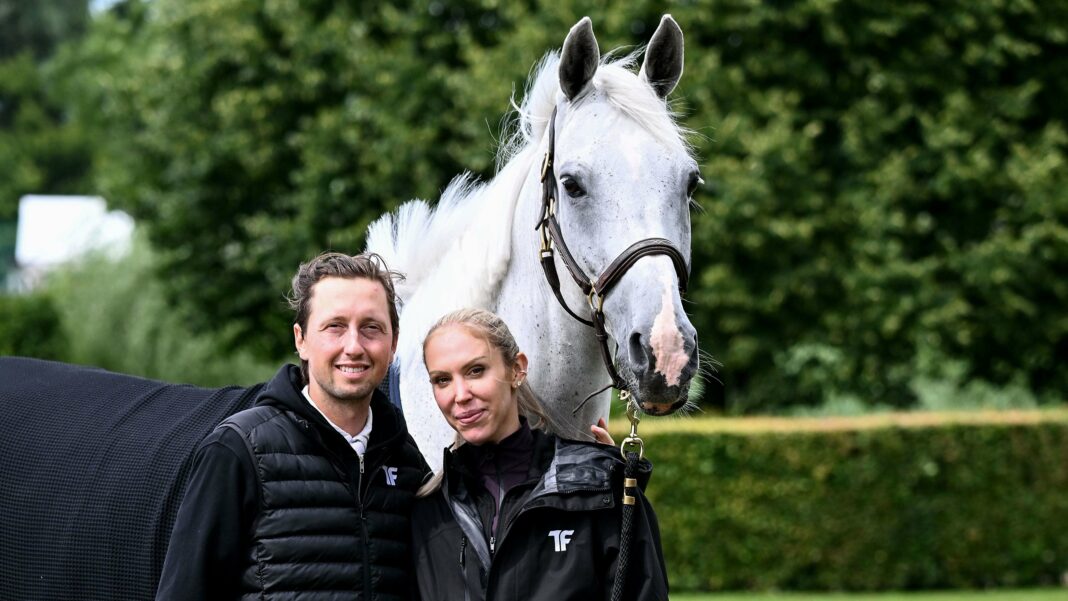Simone Pearce is a skilled dressage rider who has also embraced show jumping, exploring the complexities of both disciplines. While dressage emphasizes precision and detail, show jumping focuses on adaptability and endurance. Pearce personalizes her training methods for each discipline and highlights the unique qualities required for success in both sports. With a rigorous training routine and a focus on developing talent, Pearce and her partner Martin Fuchs aim to excel in the competitive equestrian landscape.
Simone Pearce: Bridging Two Equestrian Worlds
Simone Pearce is not only a seasoned dressage rider with two Olympic appearances under her belt, but she has also ventured into the realm of show jumping competitions. This begs the question: can riders truly excel across multiple equestrian disciplines?
The transition between disciplines is not as seamless as one might think. While there are overlapping skills, the nuances of each discipline present their own challenges. For Pearce, the thrill of mastering new skills makes the journey enjoyable.
The Importance of Dressage as a Foundation
Every equestrian rider needs a solid grounding, and for many, that foundation is dressage. This discipline cultivates essential skills such as balance, seat position, and the vital connection with the horse. Regardless of the discipline, the principles of horse care and handling remain constant. However, the differences become apparent once you’re in the saddle. Having learned about the intricacies of dressage, Pearce now recognizes the stark contrasts between it and show jumping.
For instance, dressage demands an acute attention to detail. The complexity of the movements requires intense concentration and thorough repetition. In contrast, show jumping often involves improvisation within the course, whereas dressage focuses on achieving an ideal state of execution. Dressage riders, therefore, are on a quest for perfection.
Furthermore, while Pearce also trains Martin Fuchs’ show jumping horses, she clarifies that her training methods differ depending on the discipline. Although she applies similar principles, her approach to dressage is not mirrored in her show jumping training. Each horse has unique needs, and Pearce aims to personalize the training to address any specific issues the horses may face.
When considering which discipline is more physically demanding for both horse and rider, Pearce notes that it is difficult to determine. She likens dressage to yoga, emphasizing stability over strength. Show jumping, on the other hand, requires more endurance and physical power due to its stop-and-go nature. In terms of training, dressage incorporates interval training, while show jumping consists of shorter, more intense bursts of activity.
When it comes to suitability for a discipline, horses are generally bred for specific purposes. Show jumpers are paired with show jumpers, and dressage horses are matched with dressage horses, although there are exceptions. Horses like the Swiss show jumper Barbara Schnieper’s mount, who has a dressage lineage, exemplify how genetics can sometimes blur the lines between disciplines.
In both disciplines, certain qualities are essential for success. Jumping horses must possess courage, agility, and carefulness to navigate obstacles. Both disciplines benefit from horses that have a strong mental state and a desire to perform. In dressage, the training process allows even less naturally talented horses to achieve success through dedication and a nurturing relationship.
Character traits vary significantly among horses in both disciplines. Whether a horse is high-strung or calm, each can excel with the right approach. Riders often have personal preferences regarding horse temperament, and while some favor energetic horses, others appreciate those with a more laid-back demeanor.
Interestingly, Pearce observes a notable difference between the personalities of show jumpers and dressage riders. Show jumpers tend to be more relaxed and spontaneous, while dressage riders are often perfectionists, approaching their discipline with a serious, structured mindset.
A typical training day for Pearce’s horses involves riding six times a week, incorporating three dedicated training sessions. While younger horses have slightly lighter schedules, all horses benefit from daily outings, which may include walks or grazing. Despite the rigorous training, jumping occurs only once a week.
When it comes to competition frequency, show jumping has a higher performance density globally, with numerous events almost every weekend. Conversely, dressage competitions are less frequent, making each outing more significant for riders. Show jumpers often use competitions as training opportunities, allowing horses to gain experience and improve over time. In contrast, dressage horses may not compete until they are older and more prepared.
The financial landscape for equestrian horses is intriguing, with prices being relatively similar across both disciplines. Many owners are reluctant to sell their high-performing horses, especially as interest grows in regions like the Emirates and Asia. The increasing number of participants and the rising skill level among riders reflect a competitive landscape that has evolved significantly over the years.
Martin Fuchs has engaged in trading show jumping horses alongside Pearce, who brings her extensive dressage experience to the partnership. Together, they aim to consistently have around three Grand Prix horses in their stable, showcasing the synergy between their disciplines and expertise.
As they continue to build their equestrian business, their shared vision is to cultivate talented horses ready to compete at the highest levels, tapping into the strengths of both jumping and dressage.
